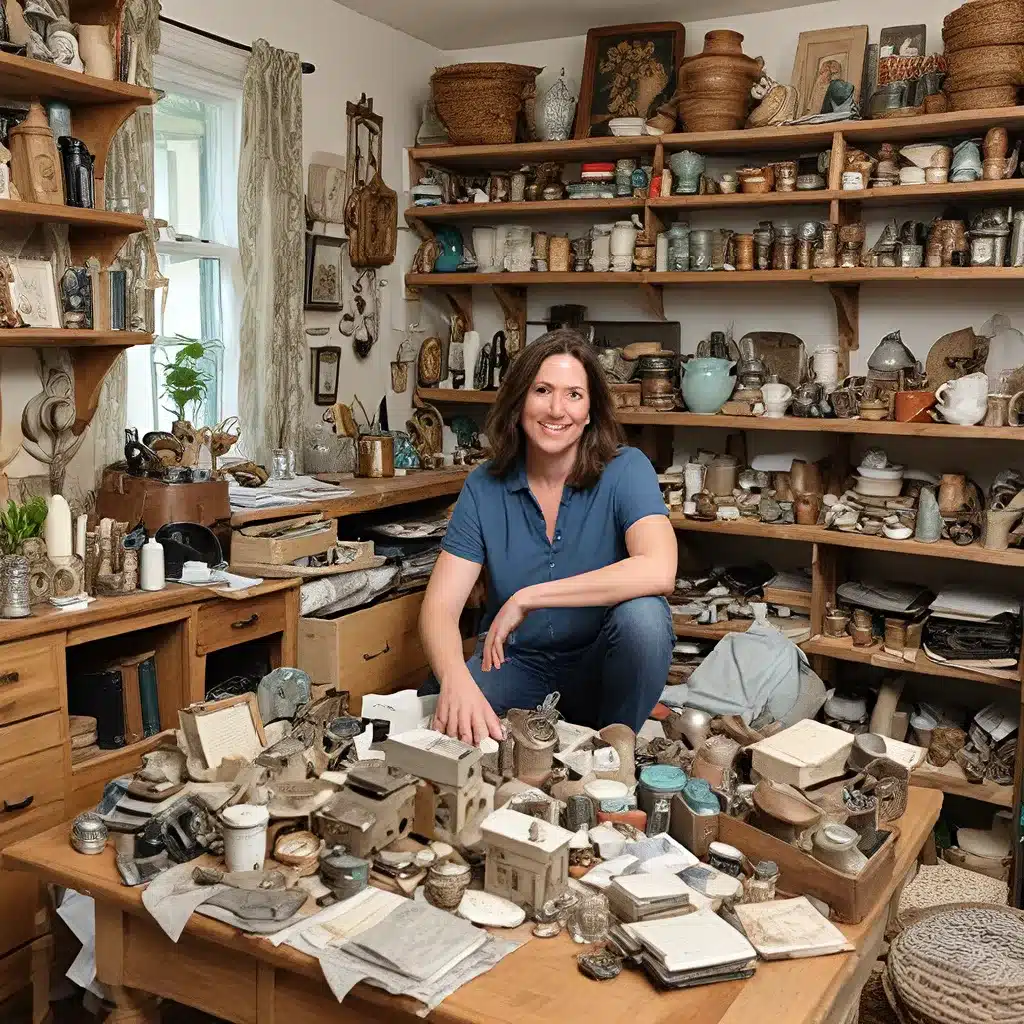Ah, the battle with clutter – a seemingly endless war that wages on in households across the country. As a self-proclaimed clutter warrior, I’ve waged my fair share of skirmishes against the overwhelming piles of stuff that can accumulate in our homes. But you know what they say, “Every battle won is a step closer to victory!”
The Clutter-Depression-Anxiety Cycle
I’ll never forget the day I discovered the profound connection between clutter, depression, and anxiety. It was like stumbling upon a hidden treasure trove of insights, and let me tell you, it was a game-changer.
Research has shown that there is a definite link between an over-abundance of household objects, what they call “stressful home environments,” and the homeowners’ health. Interestingly, the study found that women are more affected by the mess than men. As they measured cortisol levels over several days, they discovered a higher rate of depressed mood in the evenings for those living in cluttered or messy homes.
Now, I know what you might be thinking – “But I’m not a woman, so this doesn’t apply to me!” – but let me stop you right there. The notion that men are unaffected by clutter is a gross oversimplification. In fact, I can attest from personal experience that the piles of stuff in my home can be a major source of stress and anxiety, regardless of my gender.
The Guilt-Driven Cycle
One of the most insidious aspects of the clutter-depression-anxiety cycle is the role that guilt plays. Think about it – how many times have you held onto an item simply because you spent money on it, only to feel guilty about it every time you see it collecting dust? It’s a vicious cycle, my friends.
As professional cleaners, we’ve seen it all – from the well-meaning parent who just can’t bring themselves to part with their child’s old toys, to the crafter who has an entire room dedicated to their supplies (that they never use). The truth is, we often have an emotional attachment to our belongings that can be incredibly difficult to break.
But here’s the kicker – those feelings of guilt and the belief that we should keep everything because of its perceived value are actually holding us back. It’s time to break free from this cycle and embrace the freedom that comes with letting go.
Tackling the Clutter Beast
Now, I know what you’re thinking – “Easier said than done, Rachel!” And you’re absolutely right. Tackling the clutter beast can feel like an insurmountable task, especially when you’re already feeling weighed down by depression and anxiety.
But here’s the thing – you’ve got this. I’ve been there, and I know firsthand that the journey to a clutter-free home is one filled with small, but mighty, victories. The key is to start small and celebrate each and every win, no matter how seemingly insignificant.
One of my favorite decluttering tactics is the “5 Whys” method. Here’s how it works:
- Identify an item you’re struggling to let go of.
- Ask yourself, “Why do I want to keep this?”
- Keep digging deeper by asking “Why?” five times.
This simple exercise can help you uncover the root causes behind your attachment to that item, making it easier to part ways with it. It’s all about understanding your own psychology and learning to let go of the guilt and fear that can hold us hostage.
From Hoard to Haven
I know the journey to a clutter-free home might feel daunting, but I promise you, it’s so worth it. Think about it – when was the last time you walked into a perfectly organized, visually soothing space and didn’t immediately feel a sense of calm wash over you? That, my friends, is the power of a decluttered haven.
And the best part? The benefits go far beyond just aesthetic appeal. By taking control of your physical environment, you’re also taking control of your mental and emotional well-being. Fewer distractions, less visual noise, and a sense of order can work wonders in combating depression and anxiety.
So, where do you begin? Well, my advice is to start small and focus on one area at a time. Whether it’s your junk drawer, the hall closet, or even your entire kitchen, take it one step at a time and celebrate each victory, no matter how small.
Decluttering the kitchen is a great place to start – it’s a high-traffic area that can quickly become a breeding ground for clutter. Focus on clearing out expired foods, donating or passing along seldom-used appliances and gadgets, and organizing your remaining items in a way that makes sense for your lifestyle.
And remember, you don’t have to do this alone. Enlist the help of family members, friends, or even a professional organizer if you need an extra boost of motivation and accountability. The key is to find what works best for you and your unique situation.
Reclaiming Your Sanctuary
As I look around my own decluttered home, I can’t help but feel a deep sense of pride and accomplishment. Sure, it’s been a long, sometimes grueling process, but the payoff is priceless. Gone are the days of feeling overwhelmed and suffocated by the stuff that used to consume every corner of my sanctuary.
Now, my home is a true haven – a place where I can breathe and think without the constant distraction of clutter. And the best part? I’ve reclaimed my mental and emotional well-being in the process.
So, my fellow clutter warriors, I challenge you to take that first step – whether it’s tackling that junk drawer or finally letting go of that unused exercise equipment. The path to a clutter-free home may be long, but the rewards are life-changing.
Remember, progress is progress, no matter how small. And who knows, maybe one day you’ll be sharing your own clutter-conquering story, inspiring others to transform their homes from hoard to haven.







